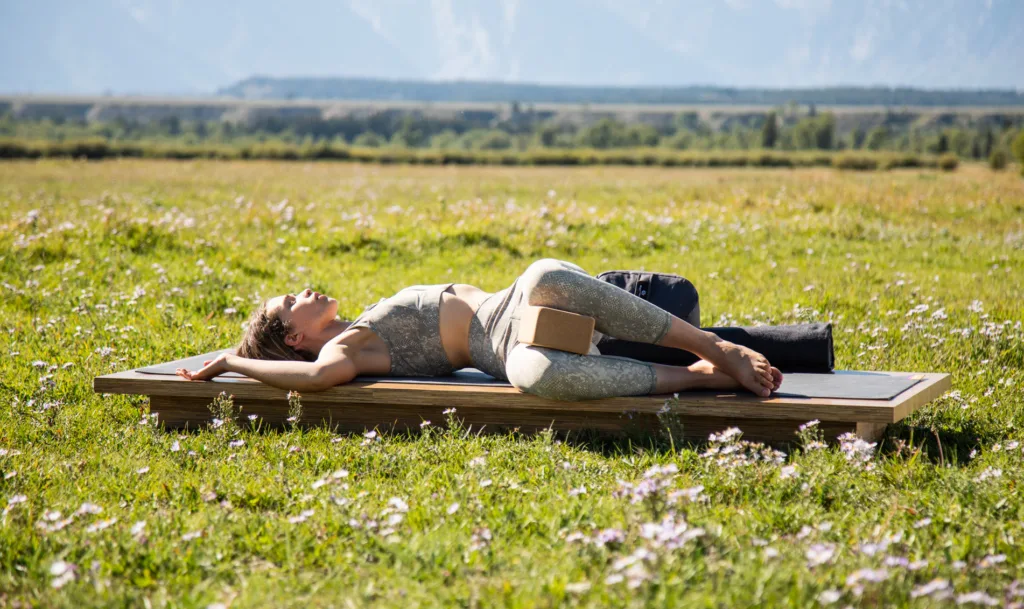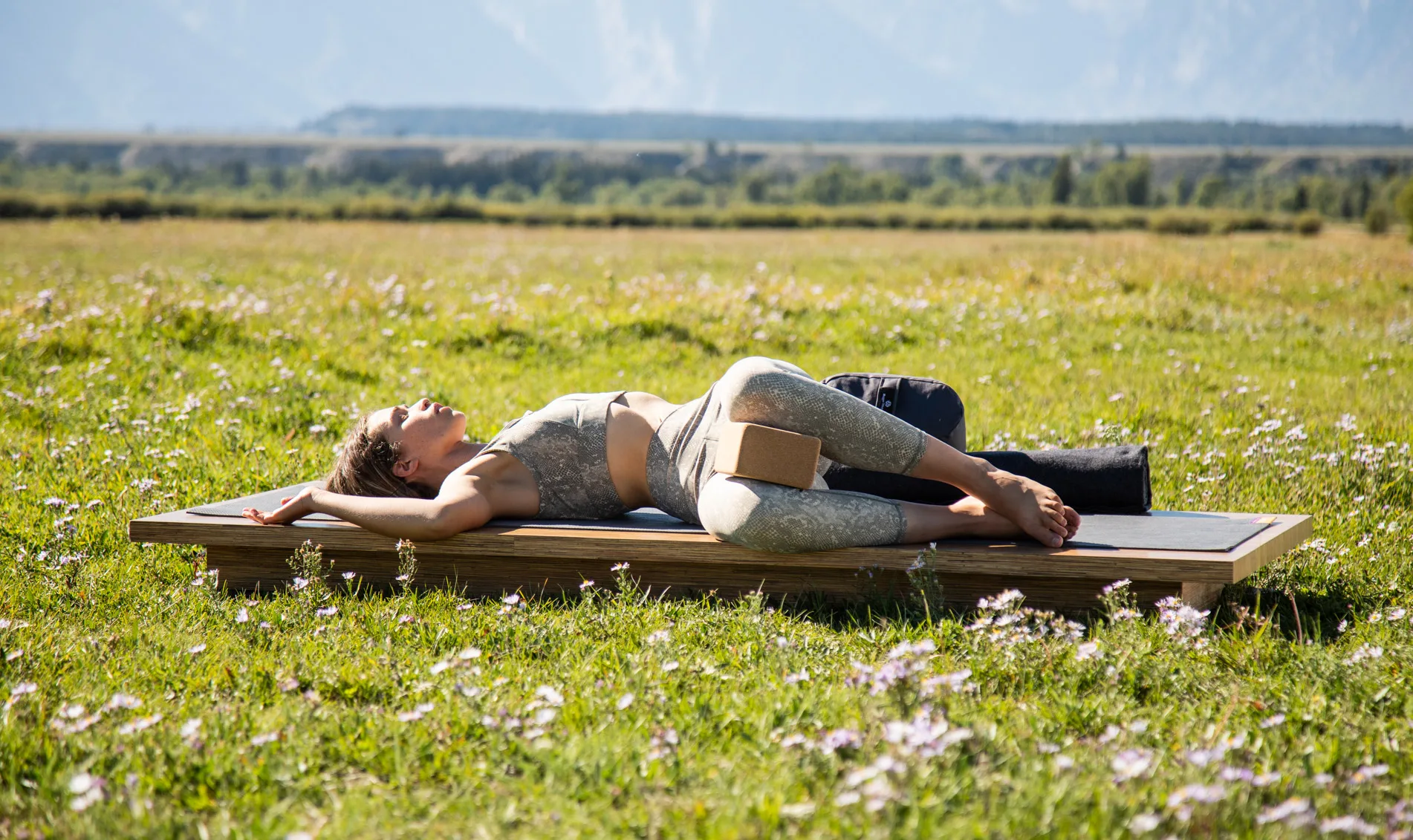This entry was posted on Apr 11, 2023 by Charlotte Bell.

Twists feel so good, but they’re tricky for people with sacroiliac (SI) issues. Given that SI joint issues are the most common yoga-related injuries, it’s important to understand how to keep your SI joint safe in all asanas. Some yoga poses—especially asymmetrical ones—are simply not a good idea when your SI joint is acting up. But there’s no reason you can’t twist—gently—as long as you know how to modify. Today we’ll look at how to practice Jathara Parivrttanasana (Revolved Belly Pose).
Revolved Belly Pose is easier on your SI joint than many of yoga’s twisting poses. This is partly because when you’re lying on the floor, it’s easier to keep your SI joint in a neutral position. The SI joint needs to be angling forward at approximately 30 degrees. This angle allows your spine to form its natural curves, the healthiest position for your spine. Many of us have learned to flatten our backs and tuck our tailbones. This destabilizes the SI joint.
The SI joint locks into place when it’s in its neutral 30-degree angle. When we tuck the tailbone, the back of the joint gaps, and the ligaments that hold it in place can overstretch. Over time, the joint becomes unstable. The vast majority of SI joint issues stem from instability in the joint.
Seated Twists vs. Revolved Belly Pose
In a seated twist, it’s much more difficult to maintain that 30-degree angle. So when the SI joint is in a less stable position to begin with, and then we twist, the joint can displace. In Revolved Belly Pose, we can easily maintain a neutral SI joint position, and therefore maintain a healthy spinal position.
Also, when you’re lying down, the pull of gravity on the spine is completely different from when you’re seated. When your spine is upright, as in sitting or standing, it is more likely to compress a bit. When you’re lying down, your spine is able to lengthen more easily.
Here are some of the benefits of Revolved Belly Pose:
- Strengthens the back and the abdominal muscles particularly the obliques.
- Increases flexibility in the shoulders, chest, hips, lower back and spine.
- Promotes blood circulation throughout the body.
- Stretches the glutes and hip rotators.
Revolved Belly Pose provides a gentle stretch for the piriformis muscle, as well as the other major hip rotators. However, for some people whose SI joints are unstable, stretching those structures can exacerbate their condition. The good news is that there are easy modifications for this. All you need is any one of these props: a Yoga Block, Standard Yoga Bolster or a Yoga Blanket.
How to Practice and SI-Joint Friendly Jathara Parivrttanasana
- Have your Yoga Block, Bolster or Blanket close by so you can reach them easily. If you’re using a blanket, roll it up so that it’s about 5 to 6 inches thick.
- Lie on your back on a Yoga Mat in Constructive Rest Position (with your knees bent and the soles of your feet on the floor).
- Feel how your body is resting on the floor. Make sure that your lumbar spine is curving gently away from the floor, to the degree that you can slide your fingers underneath when your palm is flat on the floor.
- Extend your arms outward from your shoulders, in a “T” position.
- Gently draw your knees in toward your chest, but only as far as you can draw them in without losing your lumbar curve.
- Release your knees over to the left side.
- Place your prop either between your knees, as in the photo above, or under both knees.
- You can gently rotate your head toward the right, or you can face the ceiling.
- Take 5 to 10 deep, relaxed breaths, allowing your abdomen to expand on the inhalation and contract on the exhalation.
- Return to Constructive Rest Position and take a few breaths to feel the effects of the pose. How do the sides of the body differ.
- Practice your other side.
About Charlotte Bell
Charlotte Bell discovered yoga in 1982 and began teaching in 1986. Charlotte is the author of Mindful Yoga, Mindful Life: A Guide for Everyday Practice and Yoga for Meditators, both published by Rodmell Press. Her third book is titled Hip-Healthy Asana: The Yoga Practitioner’s Guide to Protecting the Hips and Avoiding SI Joint Pain (Shambhala Publications). She writes a monthly column for CATALYST Magazine and serves as editor for Yoga U Online. Charlotte is a founding board member for GreenTREE Yoga, a non-profit that brings yoga to underserved populations. A lifelong musician, Charlotte plays oboe and English horn in the Salt Lake Symphony and folk sextet Red Rock Rondo, whose DVD won two Emmy awards in 2010.

